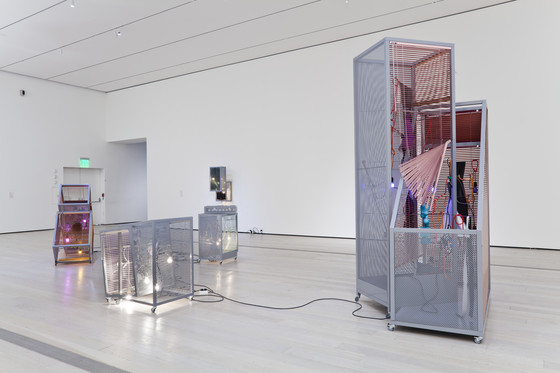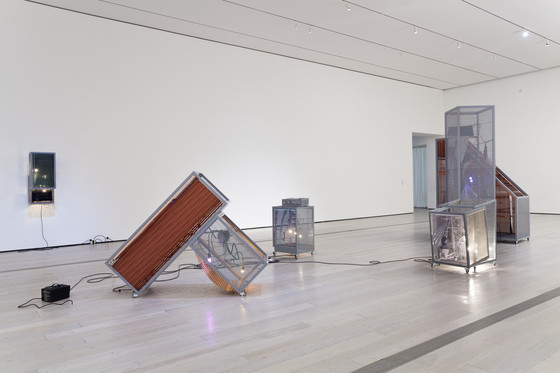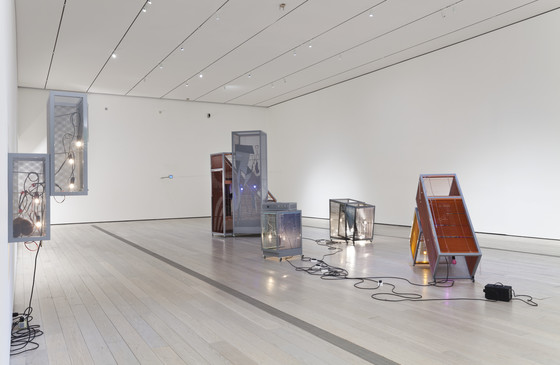Curator Notes
Among the younger generation of Korean artists working today, none is gaining international attention more rapidly than Haegue Yang. Yang will represent Korea at this year's Venice Biennale, simultaneously participating in the international exhibition housed in the Italian Pavilion of the Giardini and in the Arsenale. She is known for complex, often site-specific arrangements of objects that viewers can walk around, interacting with them physically. Frequently abstract, Yang's forms are nonetheless replete with political and autobiographical references.
Having studied in Frankfurt in the late 1990s, Yang remained in that city, working odd jobs and participating in residencies in Europe and the United States, before moving to Berlin in 2004. Today she lives predominantly in Berlin but maintains an apartment in her native Seoul where she spends several months each year. In her work as in her life, she occupies the spaces where cultures collide. She imports into the European art context, references to daily existence in Korea, paying tribute to familiar, seemingly banal details and instilling them with new social significance.
Yang is also interested in the intersection of private and public life. Figures such as the revolutionary Kim San (who fought against the Japanese occupation of Korea in the first half of the twentieth century), the philosopher Hannah Arendt, and the writer Marguerite Duras often inspire Yang's work, underscoring her concern with varied definitions of community. These references coexist with the personal concerns always central to her work. Autobiographical associations imbue her art with feelings such as loneliness and vulnerability, making it accessible emotionally as well as intellectually.
Doubles and Couples - Version Turin of 2008 is among Yang's most self-referential works . Inspired by memories of her mother's role in her childhood household, it is also an investigation of her own living and working situation. The installation comprises five abstract sculptures based on household appliances - boilers, washing machines, refrigerators, gas stoves, and showers - in Yang's apartments in Berlin and Seoul. The Berlin and Seoul boilers combine to make one sculpture, the refrigerators from those cities make another, and so on. The appliances are reduced to open geometric structures filled with electrified light bulbs, cords, and Venetian blinds, as well as found objects - dishes, socks, a toilet brush. The found objects make literal notions inherent in the abstract appliances - domesticity, the modesty of the everyday, and the struggle for sustenance.
In their most conventional form, Venetian blinds allow for the interchange between public and private, and Yang uses the shades, often broken or distorted in shape, as a barrier to vision with the potential for transparency.
The delicate poetry of Doubles and Couples lies in its ability to shift effortlessly between personal and social realms. Yang's appliances lean on, carry, ride on, and fit into each other, engaging in a kind of coupling. The couples coalesce into personalities with physical presence. Each couple interacts visually with the other four, representing a social network, a community that is far-reaching. Intrinsically, each has the capacity to bridge the vast geographic and cultural divide between Berlin and Seoul.
Lynn Zelevansky, Curator Contemporary Art, April (2009)
More...



